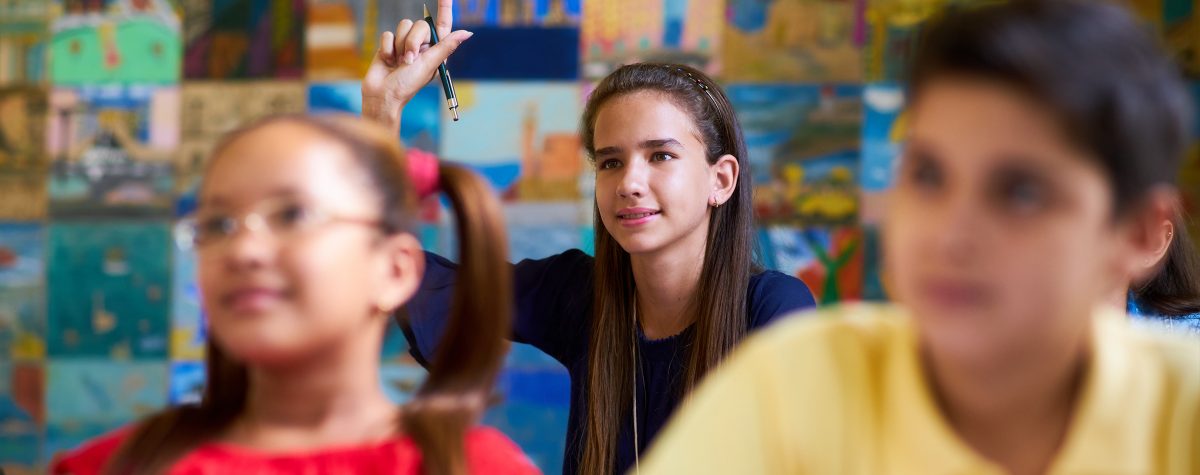Leaders have stressed the importance of developing critical-thinking skills in today’s youth for the past several decades. As the years go by, our society is centered around instant gratification more than ever. Our students can access content mindlessly at the swipe of a screen. Content that had to be drilled into a student’s memory once upon a time.
You might be wondering, “What is critical thinking?” Critical thinking is a method of thinking in a structured way or thinking systematically. It equips students with the structure and practice they need to become independent problem solvers.
How can we encourage thought? The place to start is with questions that provide the opportunity to think. First, we need to understand the power of the question.
Golden Principles for Critical Thinking Questioning
Before encouraging deep thinking among your students, it’s important to establish a firm and consistent foundation of what’s expected from them. Communicate expectations with your students and remind them until it becomes the norm.
Establish these expectations:
- Students will pay attention and participate.
- The teacher will not call on raised hands only.
- The teacher will check for understanding and thought throughout the lesson.
After establishing expectations, prepare open-ended questions to ask your students based on what content you want them to know and think about. Before asking these questions, you’ll want to have a list of possible answers pre-curated.
If your students don’t provide an excellent answer, don’t pretend it’s excellent. In a kind and gentle manner, let them know that their response didn’t meet your expectations. They’ll know to take a different approach the next time around. This is a growth opportunity, which leads to learning critical-thinking skills. Use comments that reward what you want to see more of.
Comment Examples
- “That’s a good start. Tell me a bit more.”
- “That makes sense. Now, that would be in contrast to what other views?”
- “Can you add even more detail so I can get a better idea of what you are trying to say? It will strengthen your message.”
- “Thanks for your answer. Talk me through how you came up with that, please.”
Techniques That Balance This Important Soft Skill with the Hard Skills of Disciplinary Content
Consider teaching techniques that balance the soft skills of critical thinking with the hard skills of disciplinary content. The following problem-solving processes complement critical-thinking skills. They work for tackling everything from homework questions to personal problems!
Problem Solving Process
- Identify/Understand the Problem
- Analyze the Problem/Gather Information
- Make a Plan
- Carry Out the Plan
- Evaluate the Solution: Did it Work?
- Think About It
The last step of the problem-solving process is to think about the solution and determine if it did or didn’t work. Whether it is or isn’t successful, try to figure out and discuss the why with your students. If it didn’t work, there are more steps to be taken in the problem-solving process. Try any of these tactics to help come up with a plan or strategy to solve a problem.
Solving the Problem
- Restate the problem.
- Make an orderly list.
- Think of a related problem.
- Eliminate possibilities.
- Look for a pattern.
- Draw a picture.
- Work backward.
Deep Level Questions
A deep question is a powerful teaching and learning tool. Beyond recall, deep-level questions can lead to new knowledge and wisdom, promote critical thinking and problem-solving, and require students to put in words that they think they know. Get started with a few suggestions below.
Deep-level Questions
- What caused it?
- How did it happen?
- Why not?
- What is the evidence for x?
- What if?
- How does x compare to y?
- What do we already know?
- Can you give me an example?
- Try using some of these deep–level openers:
- Tell me about . . .
- Talk me through . . .
- What pictures are coming up in your head . . . ?
- Could you explain what she means . . . ?
- What difference would it make if . . . ?
- What makes you think that . . . ?




Comments for The Power of the Question
Add A Comment
Your email address will not be published. Required fields are marked *